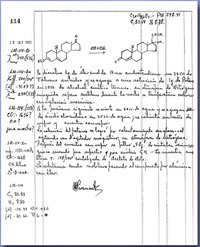Loss of bone mineral density in women using depot medroxyprogesterone acetate for contraception has been reported in several small, short-term studies. Berenson and colleagues conducted a controlled trial to compare the effect of oral and depot contraception on bone mineral density over at least two years.
They studied women 18 to 33 years of age who sought contraception and could meet the minimum criteria for entry into the armed forces. Women wishing to receive hormonal contraception selected either injectable or oral forms. Injectable contraception was provided as 150 mg of depot medroxyprogesterone acetate every three months. Women selecting oral contraception were randomly assigned to 0.035 mg of ethinyl estradiol plus 1.0 mg of norethindrone or 0.030 mg of ethinyl estradiol plus 0.15 mg desogestrel. Women who did not wish to use hormonal contraception acted as control subjects. Researchers gathered base-line data on medical history, demographic variables, smoking status, body mass index, exercise habits, and calcium intake. Bone mineral density at the lumbar spine was assessed at baseline and after one and two years of contraceptive use.
Data were complete in 110 women, and at least one follow-up bone mineral density test result was available in 191 women. At baseline, the four groups were similar in all important variables except that smoking was significantly less common in women using oral contraceptives. After controlling for significant variables, women using depot medroxyprogesterone acetate for two years experienced an average loss from baseline of 5.7 percent in spinal bone mineral density. Women using the desogestrel oral contraceptive had a loss of approximately 2.0 per-cent between the first and second year, but this loss was not statistically significant over the two years. Women using norethindrone showed no significant change in bone mineral density over the two years. Women in the control group had a gain of 2.6 percent in bone mineral density during the second year of the study.
The authors conclude that women using depot medroxyprogesterone acetate contraception lost approximately 3 percent in bone mineral density per year. Because this form of contraception is intended for long-term use, they call for additional studies to determine if the loss continues linearly and to identify strategies to counteract the effect.
ANNE D. WALLING, M.D.
Berenson AB, et al. Effects of hormonal contraception on bone mineral density after 24 months of use. Obstet Gynecol May 2004;103:899-906.
COPYRIGHT 2005 American Academy of Family Physicians
COPYRIGHT 2005 Gale Group



